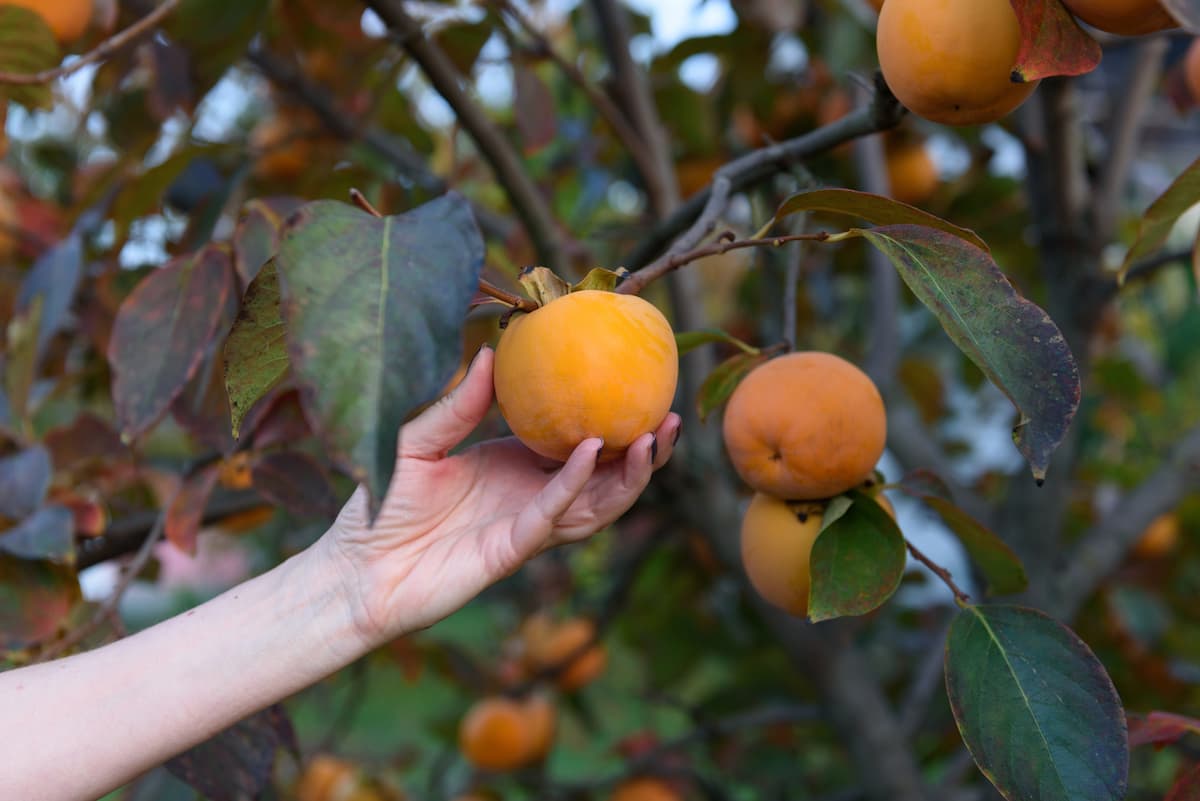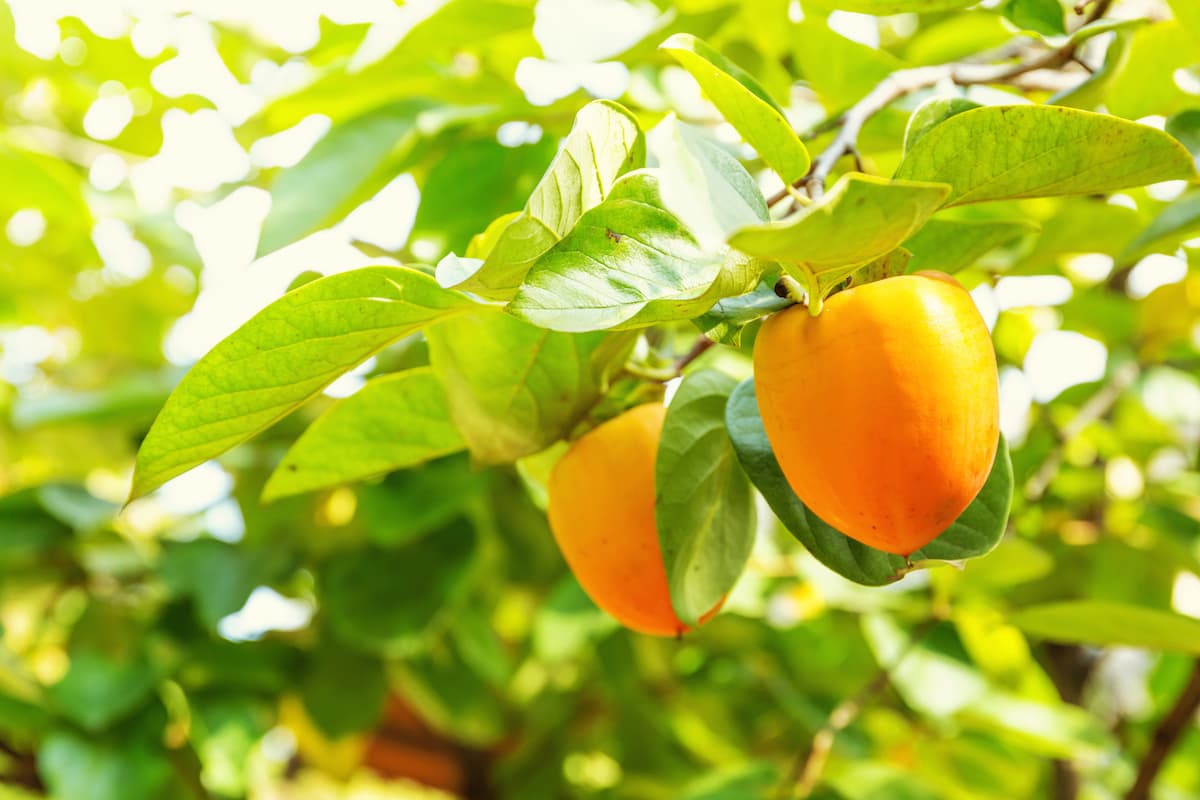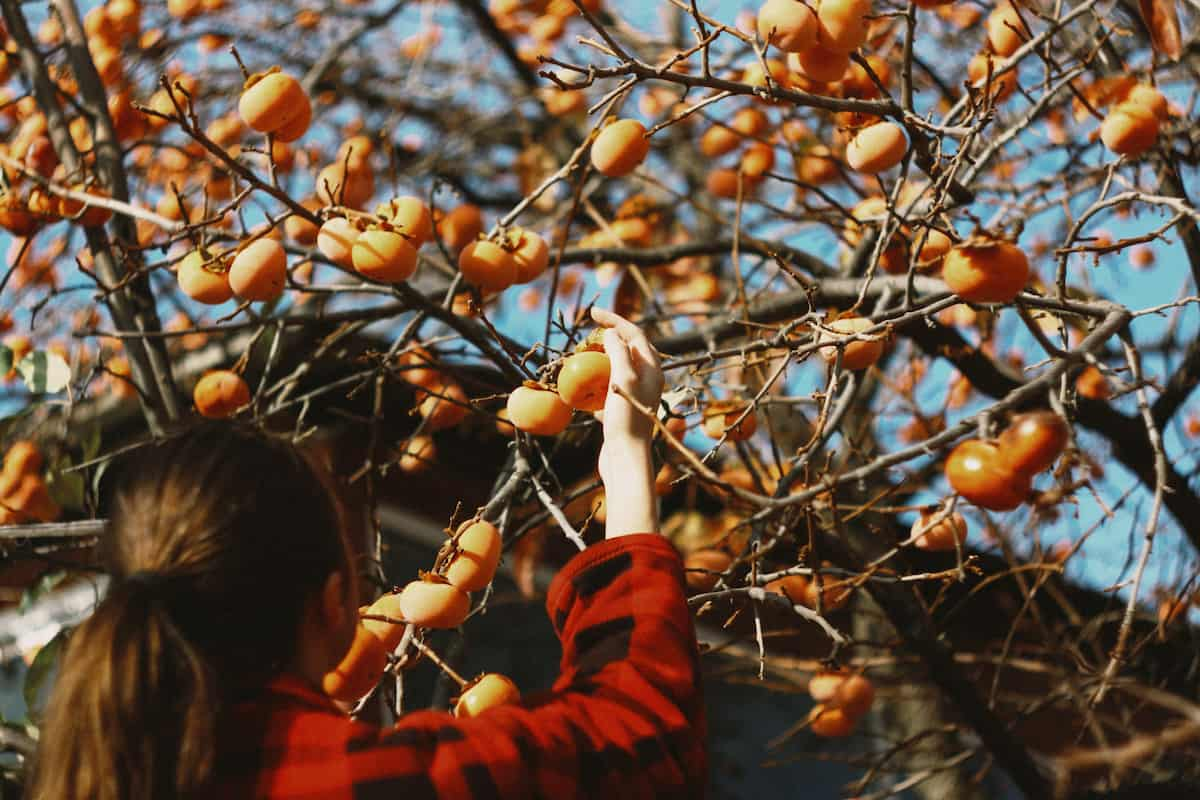Persimmons are a delicious and nutritious fruit originating from Asia but have become popular worldwide. They are relatively easy to grow and can thrive in various climates. Below we learn about growing persimmons from seed and cuttings, including planting, pruning, caring, and harvesting,

Guide to Growing Persimmon from Seed and Cuttings
Types of Persimmon Trees
Astringent and non-astringent persimmon trees are the primary varieties. Astringent varieties are typically eaten when soft and fully ripe, while non-astringent persimmons can be consumed when they are firm. Some popular astringent varieties include Hachiya, Tamopan, and Tanenashi, whereas non-astringent varieties include Fuyu, Jiro, and Izu.
Choosing Seeds and Cuttings
For those looking to grow persimmons from seed, obtaining seeds from a reputable source is essential. Choose seeds from healthy, mature fruit and clean them thoroughly to remove any pulp residue. Alternatively, you can grow persimmons from cuttings taken from an established tree. This method allows you to propagate a specific variety with known characteristics.
Preparing Seeds and Cuttings
Before planting, it’s essential to prepare your seeds and cuttings properly. To remove the hard outer shell of seeds, soak them in warm water for about 24 hours. This helps to speed up the germination process. For cuttings, take 8-12 inches long, pencil-thick cuttings from a healthy tree during the dormant season. Remove leaves and dip the base in the rooting hormone to encourage root development.
Planting Seeds and Cuttings
For seeds, fill a small container with well-draining soil and plant the seeds about 1 inch deep. Water the dirt and set the pot in direct sunlight. Typically, germination takes place within two months. Plant cuttings in potting soil and perlite on the container bottom. Don’t let the soil dry up, and put the pot in indirect sunlight. It takes around six to eight weeks for roots to start growing.
Transplanting Seedlings and Cuttings
Once your seeds have germinated or your cuttings have rooted, it’s time to transplant them. Create a space for the plant’s roots that is deep enough to accept the seedling or cutting. Fill the hole with soil, and then gently push it down to remove any air pockets that may have formed. Water the plant thoroughly and provide a layer of mulch to retain moisture and suppress weeds.
Caring for Your Persimmon Tree
- Watering: In the first few years, keep the soil consistently moist, watering deeply once a week. As the tree matures, water less frequently but more deeply, allowing the soil to dry out slightly between waterings.
- Fertilizing: Persimmon trees require minimal fertilization. Once a year, in the early spring, apply a slow-release, balanced fertilizer. Overfertilizing may cause an abundance of leaf growth but fewer fruits to form.
- Mulching: Mulch helps retain soil moisture, suppress weeds, and regulate soil temperature. Put a layer of organic mulch between two and three inches thick around the tree’s base, but keep it a few inches away from the trunk.
- Pest Control: Monitor your tree for common pests such as aphids, scale insects, and mealybugs. If you see bugs, use insecticidal soap or neem oil. Plant flowers to attract ladybirds and lacewings.
- Disease Prevention: Maintain good air circulation around the tree by properly spacing and pruning. This prevents leaf spots and anthracnose. If you notice any signs of disease, remove affected leaves and branches and treat the tree with a fungicide if necessary.
In case you missed it: How to Grow Wheat Grass in Greenhouse: A Step-By-Step Guide for Seed to Harvest

Pruning Your Persimmon Tree
If you want a healthy persimmon tree with plenty of fruit, you must prune it regularly. It’s best to prune your tree in the late winter or early spring when it’s dormant. Cut back any tangled or diseased branches and those that are dead or dying. Keep the canopy open for maximum ventilation and sunshine exposure.
For young trees, focus on developing a strong central leader and a well-balanced branching structure. As the tree matures, you can prune to control size and shape and promote fruiting. Persimmon trees bear fruit in the current season’s growth, so light annual pruning will encourage new growth and increased fruit production.
Pollination and Fruit Set
Persimmon trees are typically self-pollinating, so they do not require a separate tree for pollination. However, having more than one tree, especially of different varieties, can increase the fruit set and yield. Bees and other pollinators also play an essential role in pollination. Encourage their presence by planting a variety of flowering plants nearby.
Winter Protection
Protecting your persimmon tree is crucial in regions with harsh winters to prevent damage from freezing temperatures. Young trees, in particular, are more susceptible to cold injury. Wrap the trunk with a tree wrap or plastic tree guards, and provide a thick layer of mulch around the base to protect the root system. Be sure to remove the wrap in spring to prevent pests and diseases from developing.
Harvesting Your Persimmons
Harvesting persimmons usually occurs in late autumn, when the fruit has reached its full size and color. The timing will depend on the specific variety and the climate in which it’s grown. For astringent varieties, wait until the fruit is fully ripe and soft to the touch. These persimmons can be quite bitter if harvested too early. Non-astringent varieties, on the other hand, can be harvested when they are still firm but have developed their full color.
To harvest, gently twist the fruit off the branch or use pruning shears to cut the stem, leaving a small portion attached to the fruit. Handle the fruit carefully to avoid bruising, and store them in a cool, dry place. Persimmons can be eaten fresh, dried, or used in various culinary dishes, such as jams, pies, and puddings.
In case you missed it: How to Grow Petunias in a Greenhouse: A Step-By-Step Guide for Seed to Harvest

Conclusion
Growing persimmon trees from seeds or cuttings can be rewarding for novice and experienced gardeners. Following the steps outlined in this guide, you can successfully plant, prune, care for, and harvest your persimmon trees. With proper care, your persimmon tree will provide you with a bountiful harvest of delicious, nutritious fruit for years.
- Feed Your Flock for Less: Top 10 Tips to Save on Chicken Feed
- Ultimate Guide to Ossabaw Island Hog: Breeding, Raising, Diet, and Care
- Hatching Answers: The Top 10 Reasons Your Chickens Aren’t Laying Eggs
- Eggs and Economics: Breaking Down the Cost of Raising Backyard Chickens
- Defend Your Greens: Proven Methods to Keep Iguanas Out of Your Garden
- Ultimate Guide to Cinnamon Queen Chicken: A Comprehensive Guide for Beginners
- Ultimate Guide to California Tan Chicken: Breeding, Raising, Diet, Egg-Production and Care
- Ultimate Guide to Marsh Daisy Chicken: Breeding, Raising, Diet, and Care
- 10 Types of Chicken Farming Businesses You Can Start for Profits